Rich Hoyer’s Scouting Trip to Peru’s Satipo Road
I’m just back from a couple weeks’ scouting in Peru, a fantastic country for birding – megadiverse and full of friendly people.
Just a long day’s drive from Lima, Peru is the Satipo River valley. Paved highway will take you all the way to the small city of Satipo, and from there it’s a birdy route up the east slope of the Andes to the little village of Calabaza. You could do it all in a day, but there’s no way you could not stop for birds! Even in the patchy lower stretches I came across Emerald Toucanet, a high elevation Plain-crowned Spinetail, Golden-bellied Warblers, and Versicolored Barbets. Then while driving farther up, I had surprising encounter of 6 Andean Motmots in just a few miles.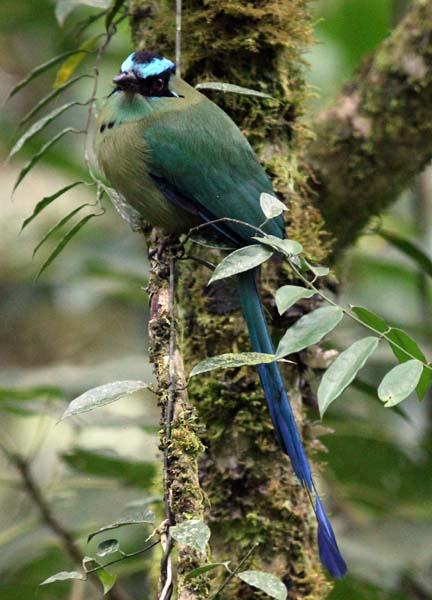
This is where I stayed for 3 nights in the very basic lodging they have put together. This photo looking up the canyon shows almost half the town of Calabaza. The woman is Felicita, who runs a little store and cooks meals for visitors (shooing the hens out of the building all day) . During these three days it was just me and 5 road workers at her table.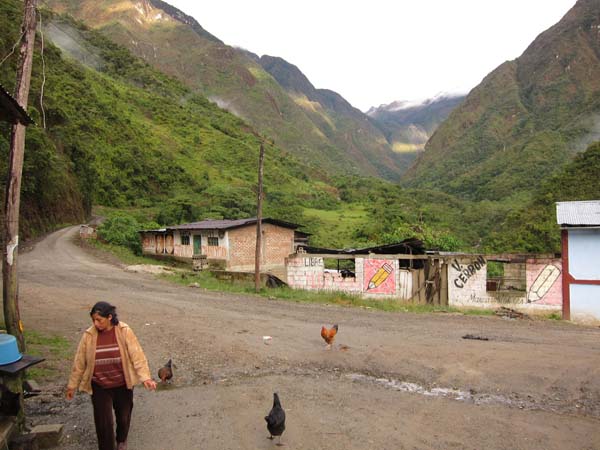
The Eye-ringed Thistletail may be one of the most well-known local endemics that one looks for in the upper elevations of this valley.
I located several pairs with ease, including from this location here, which is actually just over the divide into the Rio Mantaro drainage to the south.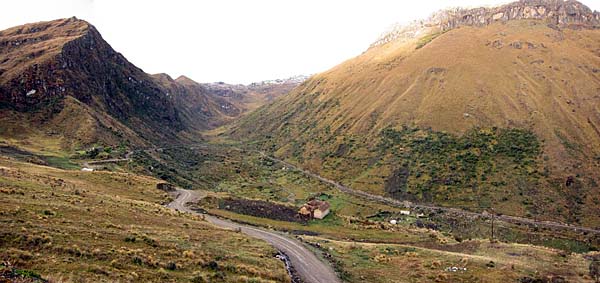
The species of Brachyotum (family Melastomataceae) here is surprisingly blond rather than the deep purple I’ve seen everywhere else, but it’s still a favorite for the many species of hummingbirds found here, such as Shining Sunbeam and Olivaceous Thornbill.
Barred Fruiteater is a common (though not commonly seen) inhabitant around 3000 meters elevation.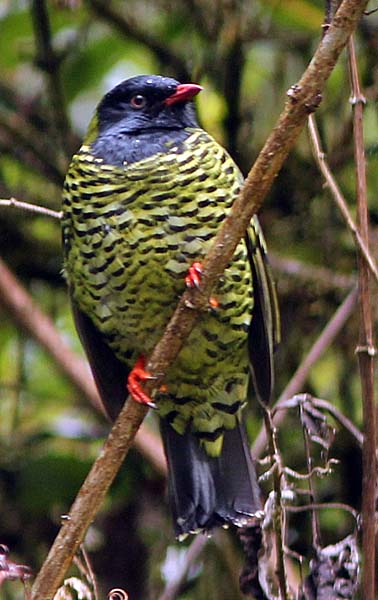
Also common but hard to miss is the striking Moustached Flowerpiercer.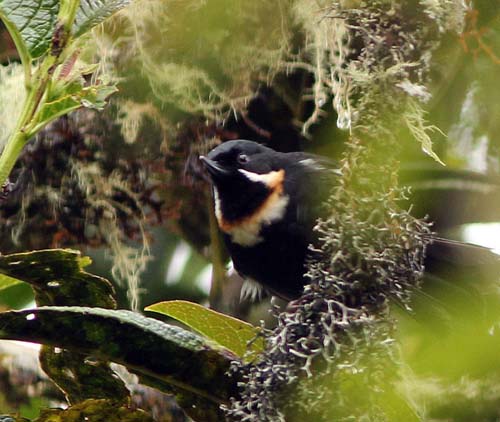
Rare but widespread in Andean cloud forests is the White-rumped Hawk. This was the first time I’ve seen one perched, and perhaps only the 5th one I’ve seen.
I look forward to my next visit to this area, whether guiding a private tour, or when they have a lodge constructed for one of my regular tours.
